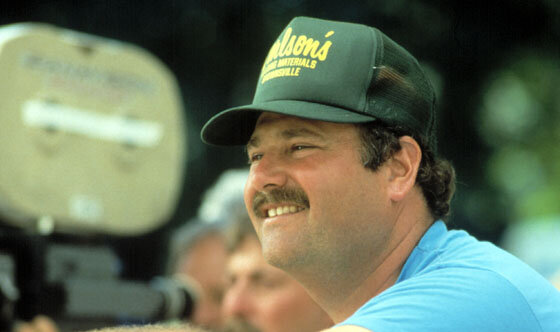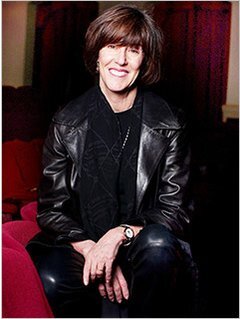HOW HARRY AND SALLY REVIVED ROMANCE
The 1970s was the Decade of Divorce. As the divorce rate doubled, American culture scoffed at romance. Kramer fought Kramer. Alice didn’t live here anymore. And Tammy Wynette spelled it out — D-I-V-O-R-C-E. By the early ‘80s, Tina Turner was calling love “a second-hand emotion,” while another hit asked, “doesn’t anybody ever stay together anymore?
One summer afternoon in 1984, two divorcees met at the Russian Tea Room in Manhattan. He was a director, divorced in 1981. "I was in the middle of my single life,” Rob Reiner recalled. “I'd been divorced for a while. I'd been out a number of times, all these disastrous, confusing relationships." She was a screenwriter, divorced in 1973 and in 1981. After her second divorce, Nora Ephron cried and cried, then wrote her breakup into a scathing novel and movie, Heartburn.
Neither had much hope for marriage, but could men and women even be friends? Ephron and Reiner got to talking. They soon teamed up to make a movie.
Critics were unimpressed. “Wonderful parts,” wrote Newsweek, but “it doesn’t add up.” The New York Times called it an “often funny but amazingly hollow film.” But thirty-plus years later, lovers love “When Harry Met Sally.” Vanity Fair — “an ecstatic survey of marriage, a loving portrait of loving.” BBC — “the greatest romcom of all time.”
So how did they do it? How did two cynical divorcees make a movie that celebrates lasting romance? Like marriage, it took teamwork. Consider that scene — you know it.
Midway through shooting, Ephron and Reiner agreed that Sally needed more to say. How about if they discussed sex and even orgasms? They talked with Sally. “Why don’t I just fake one?” Meg Ryan asked. In a restaurant? She did — again and again in many takes. Billy Crystal came up with the zinger line and Reiner’s mother, Estelle, delivered it.
“I’ll have what she’s having!”
But despite the notoriety of that scene, “When Harry Met Sally” isn’t about lust. It’s about how opposites attract. So as Ephron wrestled with heartburn, she did some research. She based “high maintenance” Sally, who takes “an hour and a half to order a sandwich” on herself and friends. Harry was Reiner writ large. Then, with the stars in place, Ephron explored the universe.
Interviewing old couples, she took down their stories, verbatim. Reiner cast character actors to play them in vignettes that spiced the movie with hope.
As Harry meets, forgets, then re-meets Sally, we meet the man who saw the woman coming into the Automat and said, “That’s the girl I’m going to marry.” We meet high school sweethearts who moved apart but never forgot — “Her face was burned on my brain.” And the couple, talking over each other, telling how they grew up in same neighborhood but “never met. . . (We never met!) You know where we met? In the elevator at the Ambassador Hotel. . . (He was on the third floor, I was on the twelfth.) I rode up nine extra floors just to talk to her! (Nine extra floors!)” Each couple ends by noting how long they’ve been married — 25, 35, 55 years.
But Reiner and Ephron remained skeptical. What could they call the film? “When They Met,” or “Just Friends,” or even, “Harry, This is Sally?” And they couldn’t decide on an ending. This was the Eighties! Harry and Sally couldn’t just come together. But then a funny thing happened on the way to the megaplex.
Ephron re-married in 1987, to a screenwriter she would stay with the rest of her life. And while filming Harry and Sally, Reiner fell in love with a woman behind the camera. They married, had three kids, and are still together. If seasoned divorce veterans could “make it work,” why not Harry and Sally?
The final scene let Crystal improvise, explaining why he had come rushing back to Ryan. On New Year’s Eve after one accidental night together. Watch.
So Rob met Michele. And Nora met Nick. And Harry met Sally. But what about the movie’s enduring question?
“Yes, men and women can just be friends,” Meg Ryan said. “I have a lot of platonic male friends, and sex doesn't get in the way." Billy Crystal is not so sure. "I'm a little more optimistic than Harry, but I think it is difficult. Men basically act like stray dogs in front of a supermarket. I do have platonic women friends, but not best, best, best friends.”
This much everyone agrees on. One movie revived onscreen romance. “You can find traces of ‘When Harry Met Sally’ DNA in virtually every romantic comedy that’s been made since,” AV Club noted. Fairy tales may not come true, but life does. And the divorce rate, after peaking in 1980, has declined ever since.













